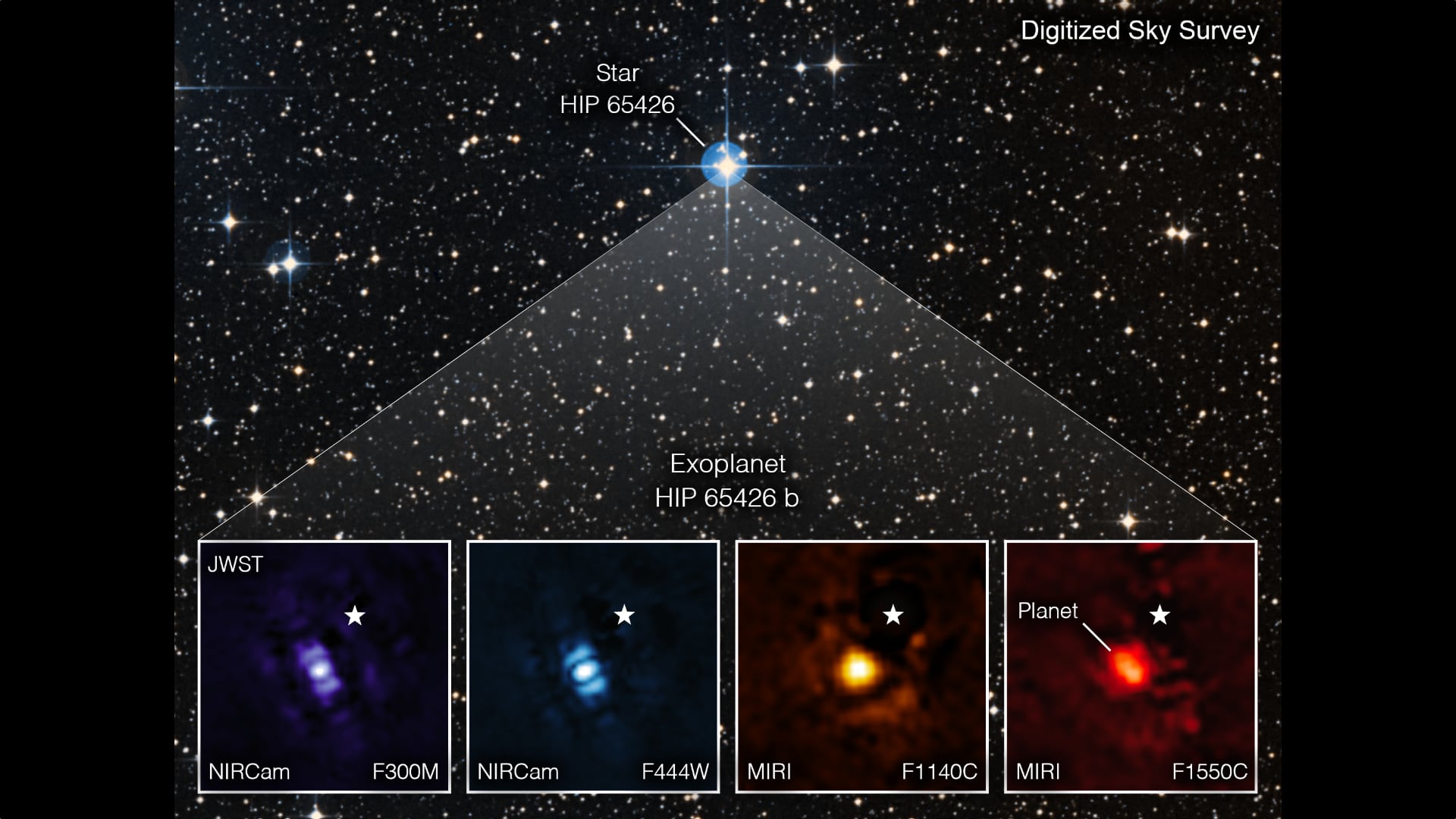
The wonders of Webb continue to unfold as the space telescope takes its first direct image of a planet outside our solar system.At some point we'll stop talking about each of Webb's new milestones in the breathless manner of an excited parent, but not just yet. Y'know, it's science, baby.
And the reason for this week's excitement is the first direct image it's taken of an exoplanet, HIP 65426 b.
HIP 65426 b, is about six to 12 times the mass of Jupiter and was first discovered in 2017 using the SPHERE instrument on the European Southern Observatory’s Very Large Telescope in Chile. Webb’s view, at longer infrared wavelengths than then, reveals new details that ground-based telescopes would not be able to detect because of the intrinsic infrared glow of Earth’s atmosphere.
“This is a transformative moment, not only for Webb but also for astronomy generally,” said Sasha Hinkley, associate professor of physics and astronomy at the University of Exeter in the United Kingdom, who led these observations with a large international collaboration.
Usefully, HIP 65426 b is about 100 times farther from its host star (HIP 65426, 385 light-years from Earth in the Centaurus constellation) than Earth is from the Sun, making it sufficiently distant from the star so that Webb can easily separate the planet from the star in the image.
Webb’s Near-Infrared Camera (NIRCam) and Mid-Infrared Instrument (MIRI) are both equipped with coronagraphs, which are sets of tiny masks that block out starlight, enabling Webb to take direct images of certain exoplanets like this one.
“It was really impressive how well the Webb coronagraphs worked to suppress the light of the host star,” said Hinkley. And even better, NASA’s Nancy Grace Roman Space Telescope, slated to launch later this decade, will demonstrate an even more advanced coronagraph.
Okay, so this is not the first direct image of an exoplanet taken from space – the Hubble Space Telescope has captured direct exoplanet images previously – but HIP 65426 b points the way forward for Webb’s exoplanet exploration. And space-based observations are important. Earth-based telescopes have imaged around 20 exoplanets, including HIP 65426 b, but these are compromised by noise introduced by the Earth’s atmosphere and restricted to a narrow range of visible wavelengths. Webb's images span a wide range of wavelengths, including the infrared, which accounts for most of the light produced in the planet’s atmosphere.
“I think what’s most exciting is that we’ve only just begun,” said Aarynn Carter, a postdoctoral researcher at the University of California, Santa Cruz, who led the analysis of the images. “There are many more images of exoplanets to come that will shape our overall understanding of their physics, chemistry, and formation. We may even discover previously unknown planets, too.”


Comments